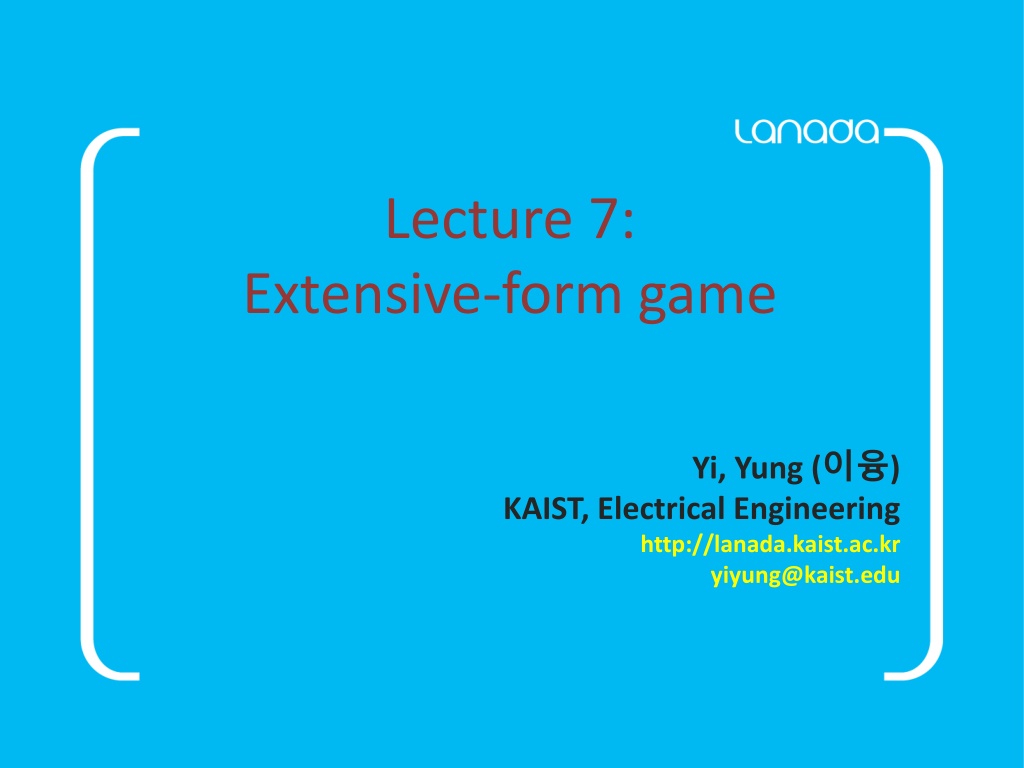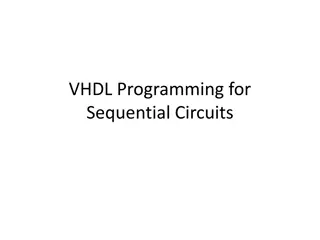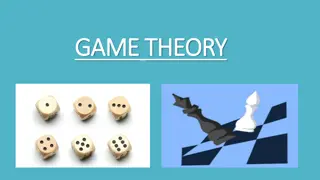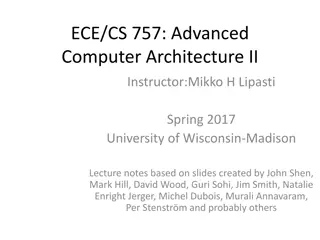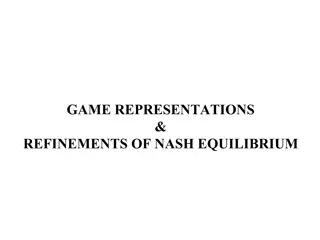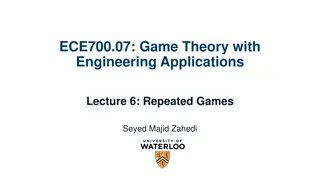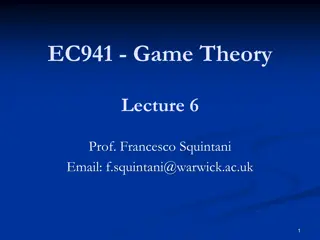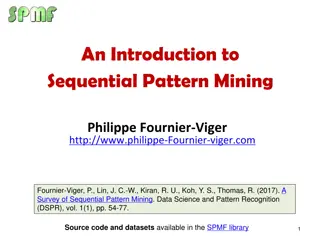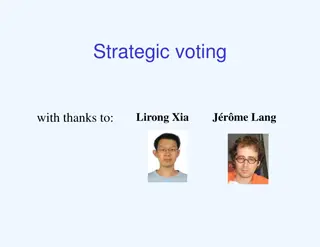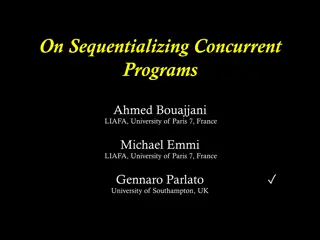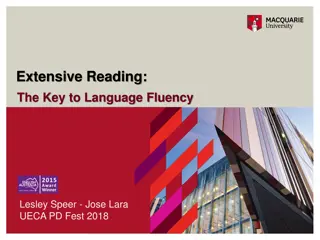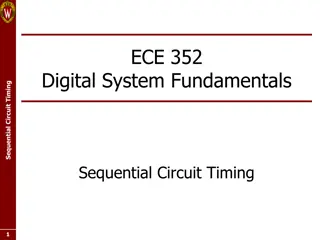Understanding Sequential Games in Extensive Form
Exploring the concept of sequential games through extensive-form game theory, this lecture covers game trees, player strategies, perfect/imperfect information, and the role of decision-making order. The examples illustrate how players make strategic choices based on available information, leading to equilibrium outcomes in dynamic game settings.
Download Presentation

Please find below an Image/Link to download the presentation.
The content on the website is provided AS IS for your information and personal use only. It may not be sold, licensed, or shared on other websites without obtaining consent from the author. Download presentation by click this link. If you encounter any issues during the download, it is possible that the publisher has removed the file from their server.
E N D
Presentation Transcript
Lecture 7: Extensive-form game Yi, Yung ( ) KAIST, Electrical Engineering http://lanada.kaist.ac.kr yiyung@kaist.edu 1
Contents So far, Simultaneous play What happens if a game is played sequentially One player can see what other player chooses, and then decides on its strategy Equilibrium? What other issues? 2
Sequential Game A major class of dynamic games , where players take their de cisions in a certain predefined order Role of information at each stage: very important Perfect/imperfect information Thus, distinguish between action vs. strategy Example: if an individual has to decide what to do in the evening, and the options are camping or staying at home; Strategy: If the weather report predicts dry weather for the evening, then I will go out camping; otherwise, I will stay at home Action: After knowing about the weather, the individual would take an action 3
Game Trees (Extensive form) Extensive-form (i.e., tree) Most useful representation of sequential games Discrete strategy space Game represented as a tree each non-leaf node represents a decision point for some player edges represent available choices Can be converted to matrix game (Normal form) plan of action must be chosen beforehand 4
Game Trees Example Player 1 R L Player 2 Player 2 Payoff to Player 1 R L R L Payoff to Player 2 -2, 1 3, 1 0, -1 1, 2 Strategy set for Player 1: {L, R} Strategy for Player 2: __, __ what to do when P1 plays R what to do when P1 plays L Strategy set for Player 2: {LL, LR, RL, RR} 5
More Formal Extensive Game Definition An extensive form game a finite set N of players a finite height game tree (s ) ui i N payoff function for each player where s is a leaf node of game tree Game tree: set of nodes and edges each non-leaf node represents a decision point for some player edges represent available choices Perfect information all players have full knowledge of game history 6
Game Tree Example Microsoft and Mozilla are deciding on adopting new browser technology (.net or java) Microsoft moves first, then Mozilla makes its move Microsoft java .net Mozilla Mozilla java .net java .net 0, 0 2, 2 1, 0 3, 1 Non-zero sum game what are the NEP? 7
Can we look at an extensive-form game from its associated normal form game? 8
Converting to Matrix Game java .net java .net java .net Mozilla 0, 0 2, 2 1, 0 3, 1 .net, .net 3, 1 .net, java 3, 1 java, .net 1, 0 java, java 1, 0 .net Microsoft java 0, 0 2, 2 0, 0 2, 2 Every game in extensive form can be converted into a normal form exponential growth in number of strategies 9
NEP and Incredible Threats java .net java .net java .net Mozilla .net, java 3, 1 0, 0 2, 2 1, 0 3, 1 .net, .net 3, 1 java, .net 1, 0 java, java 1, 0 .net NEP Microsoft java 0, 0 2, 2 0, 0 2, 2 incredible threat Play java no matter what is not credible for Mozilla if Microsoft plays .net then .net is better for Mozilla than java 10
How should I characterize real equilibriums in extensive-form games? 11
The Subgame Concept Def: a subgame is any subtree of the original game that also defines a proper game includes all descendents of non-leaf root node Microsoft java .net Mozilla Mozilla java .net java .net 0, 0 2, 2 1, 0 3, 1 3 subtrees full tree, left tree, right tree 12
Subgame Perfect Nash Equilibrium Def: a NEP is subgame perfect if its restriction to every subgame is also a NEP of the subgame Thr: Every extensive form game has at least one subgame perferct Nash equilibrium Kuhn s theorem, based on backward induction 13
Subgame Perfect Nash Equilibrium Microsoft (N, NN) is not a NEP when re stricted to the subgame star ting at J java .net Mozilla Mozilla J N (J, JJ) is not a NEP when restr icted to the subgame startin g at N java .net java .net 0, 0 2, 2 1, 0 3, 1 (N, NJ) is a subgame perfect Nash equilibrium Mozilla NN 3,1 NJ 3,1 JN 1,0 JJ 1,0 Subgame Perfect NEP N MS Not subgame Perfect NEP J 0,0 2,2 0,0 2,2 14
What is a good algorithm to find equilibria in extensive-form game? 15
Solving the Game (Backward Induction) Starting from terminal nodes move up the game tree making best choice java .net Best strategy for Mozilla: .net, java (follow Microsoft) java .net java .net 0, 0 2, 2 1, 0 3, 1 Equilibrium outcome java .net Best strategy for Microsoft: .net 2, 2 3, 1 Single NEP Microsoft .net, Mozilla .net, java 16
Backward Induction on Game Trees Kuhn s Thr: Backward induction always leads to a saddle point (on games with perfect information) Saddle point = subgame perfect NEP game value at equilibrium is unique (for zero-sum games) In general, multiple NEPs are possible after backward induction cases with no strict preference over payoffs Effective mechanism to remove bad NEP incredible threats 17
Summary 18
